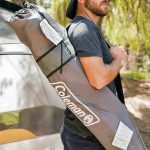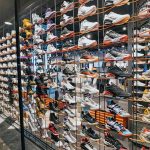Trade negotiations between the U.S. and China over the past three months have never been more important to the Outdoor and Snow Sports industries. In late June, the Department of Commerce placed quotas on apparel imports from China. Those quotas, which were quickly filled when larger vendors and retailers aggressively moved to secure deliveries, have now turned into an embargo and many retailers may not have their full product assortments on the floor this winter.
Trade negotiations between the U.S. and China over the past three months have never been more important to the Outdoor and Snow Sports industries. In late June, the Department of Commerce placed quotas on apparel imports from China. Those quotas, which were quickly filled when larger vendors and retailers aggressively moved to secure deliveries, have now turned into an embargo and many retailers may not have their full product assortments on the floor this winter.
The issue began in January when existing trade quotas were removed from all apparel coming out of China, a change that was ten years in the making as part of Chinas entry into the WTO. In the following months, many apparel vendors — from across all industries — placed an unprecedented number of orders with third-party Chinese manufacturing companies. According to the National Textile Association, in the first five months of the year, all U.S. textile and apparel imports from China increased by 64%. According to Chinese Customs data, as of May 2005, China's textile and apparel exports to the United States were up 85%. Others have cited data that suggests that the import of certain classifications jumped more than 500% in the first 30 days of the change.
After heavy lobbying efforts by trade groups, the U.S. government responded on May 13, 2005, with the Committee for the Implementation of Textile Agreements (CITA), a Dept. of Commerce working group chaired by James Leonard, imposing the “safeguard provision” of Chinas World Trade Organization ascension agreement. This established quotas covering many cotton items as well as man-made fiber (MMF) underwear, shirts, non-knit (woven) shirts, and MMF trousers. These quotas allowed import volume to grow only 7.5% over last years volume. When these quotas were filled in July and August, the U.S. Department of Customs embargoed imports in these categories. These safeguards are set to expire in 2008.
Normally, quotas established for a specific country would not be a problem as vendors spread their production across a number of countries to ensure deliveries, but most manufacturers had already placed orders with Chinese manufacturers and were simply awaiting delivery of their fall goods. Large retailers and vendors began to air freight goods into the U.S. in order to beat their competitors to market and ensure deliveries of fall product.
The manufacturers who did not — or could not — react in time, may now be left without product this fall/winter season. Much of that product is now tied up in customs as the Commerce Dept. works on a solution to the impasse.
Estimates coming out of SIA indicate that the impact could be very serious for the membership, with potentially up to 80% of China manufactured ski pants not reaching the retail floor this year. The impact on the outdoor industry is similar. A brief poll conducted by OIA showed that 70% of the organizations members manufacture goods in China, and roughly 58% of their products will be limited by these quotas and embargoes.
Bill Post, president of Sport Obermeyer, told BOSS that the real issue was the timing of the embargoes. “We went into the product year not knowing that any embargoes would be in place on goods coming out of China,” he said. “If we were given enough time to properly plan, I would have moved all of my production out of China, but once I complete the manufacturing planning process, and in the midst of production, it makes thing difficult.”
Post said that his manufacturers were able to work around the quotas and ramp up production of the affected items to bring them into the country before the embargoes were put in place. He also expressed confusion over the reasons for the quotas. “The thing is that these quotas were put in place to protect American jobs,” he said. “But, we are in a sector where these goods have not been produced in any quantity in the U.S. for over ten years.”
Recently, U.S. and Chinese officials concluded trade negotiations in San Francisco, but no firm decisions or commitments came out of those meetings. Next month, these same officials will begin talks again in Beijing where the trade embargoes will be discussed. SIA and OIA are both working diligently towards an outcome that favors the Outdoor and Snow Sports industries. At the same time, many unions and other manufacturing organizations are lobbying to keep the embargoes in place, regardless of the economic impact on small- and medium-sized companies throughout the U.S.
SIA has been spearheading the industry effort with heavy behind-the-scenes work, producing statistical facts for Congress and the Department of Commerce so they have a better understanding of the Snow Sports category. David Ingemie, president of SIA, told BOSS that SIA is not against quotas, but in this case, manufacturers were not given enough time to react and move their production elsewhere. The end result could have serious, negative effects on the industry in the U.S. OIA is also working closely with SIA on the issue of ski pants. James Leonard, chairman of CITA, participated in a panel discussion called “The Global Market Jolt How to Survive it and Thrive” at this years OR Summer Market. OIA walked Mr. Leonard through the trade shows main hall and introduced him to many of the organizations members, who expressed concern over the negative impact embargoes are having on the industry.
The embargoes are tied closely with much larger global issues, like Chinas intellectual property laws and Chinas currency float on the global market. This makes negotiations to alleviate the pressures on the Outdoor and Snow Sports industries slow, but both SIA and OR are hopeful that progress will be made within the next 30 days when talks resume.
>>> Catch 22. Tell your retailers their orders are in jeopardy and risk losing an order that may still ship if a compromise is reached, or wait for a final decision and risk leaving your customers without pants this fall
>>> The issue in the EU is even more of an issue as the Snow Sports industry fights an embargo on sweaters and retailers across Europe and the U.K. face a shortage of bras and trousers this fall…















